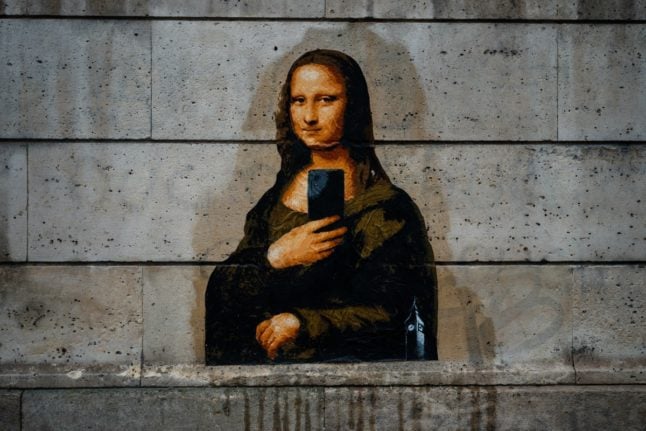The sails of the 135-year-old cabaret in the Montmartre district of Paris collapsed last month — the cause remains unknown.
But with some 1,700 spectators still coming every evening, the show must go on. And while the 60-strong troupe of “Doriss Girls” — named after legendary choreographer Doris Haung — get all the attention, creating and maintaining their costumes is another huge and highly skilled job.
The show has daunting annual requirements: nearly 1,000 tailor-made outfits each requiring up to 250 hours of assembly, 800 pairs of shoes, and not forgetting the three kilometres of ostrich-feather boas.
READ MORE: 5 things to know about Paris’ iconic Moulin Rouge
The clacking of sewing machines backstage is a near-constant soundtrack before and after — and sometimes during — shows.
“We are on every evening. The costumes wear out… But the show must always be the same, at the highest quality,” the cabaret’s general director, Jean-Victor Clerico, 38, told AFP.
In the same family for four generations, the Moulin Rouge started buying up small artisan workshops in the 2000s — partly experts in featherwork and embroidery — that were struggling to survive in modern-day Paris.
“These artisans are a living heritage that risked disappearing, and they are essential for the show,” said Clerico.
“It was the duty of the Moulin to perpetuate their existence and allow the transmission of their knowledge to younger generations,” he added.
Mine Verges, 88, a costume designer since the 1960s, was one of the first to come under the Moulin’s umbrella.
Her workshop supplies and maintains the troupe, as well as many other clients.
“The most complicated costumes are those of the cabaret. Everything must be much more solid than normal clothing, and when there are feathers, it must above all be pleasant for the dancers,” she told AFP.
“Le Moulin was the first cabaret with whom I worked and it will be the last,” she said, adding that she was pleased her savoir-faire will be passed down.
Featherwork
Supplier to haute couture houses such as Hermes and Louis Vuitton, Maison Fevrier was set up in 1929 and is the last featherwork workshop in the heart of Paris.
Its “plumasserie” (fine feather work) has been officially recognised as a “living heritage” by the French government.
It became part of the Moulin family in 2009 and handles some three tonnes of ostrich, pheasant and rooster feathers for the cabaret each year.
Embroidery is handled by Atelier Valentin using the ancestral technique of Luneville crochet and chain stitch.
“The marvellous has always fascinated me. There is no limit to what you can embroider: sequins, pearls, rhinestones, repurposed metal pieces… The only imperative for a stage costume is to be strong,” said its director, Caroline Valentin, whose other clients including the Paris Opera, Disney, Givenchy and the Academie Francaise.
Shoes are another integral part of the show, especially for the energetic high-kicking antics of the Can-Can that conclude every evening.
Clairvoy, a cobblers founded in 1945, has been part of the Moulin’s operation since 2007.
Nicolas Maistriaux, 45, and his team make the troupe’s shoes, taking up to 60 hours to assemble each pair, not counting their maintenance and renewal when the dancers’ heels wear them out.
Kylie Minogue also called on Maison Clairvoy for her recent tour.
“Our jobs are rewarding beyond anything,” said Valentin. “We have the absolutely immense chance to create beauty… That’s what artistic craftsmanship is all about.”




 Please whitelist us to continue reading.
Please whitelist us to continue reading.
Member comments